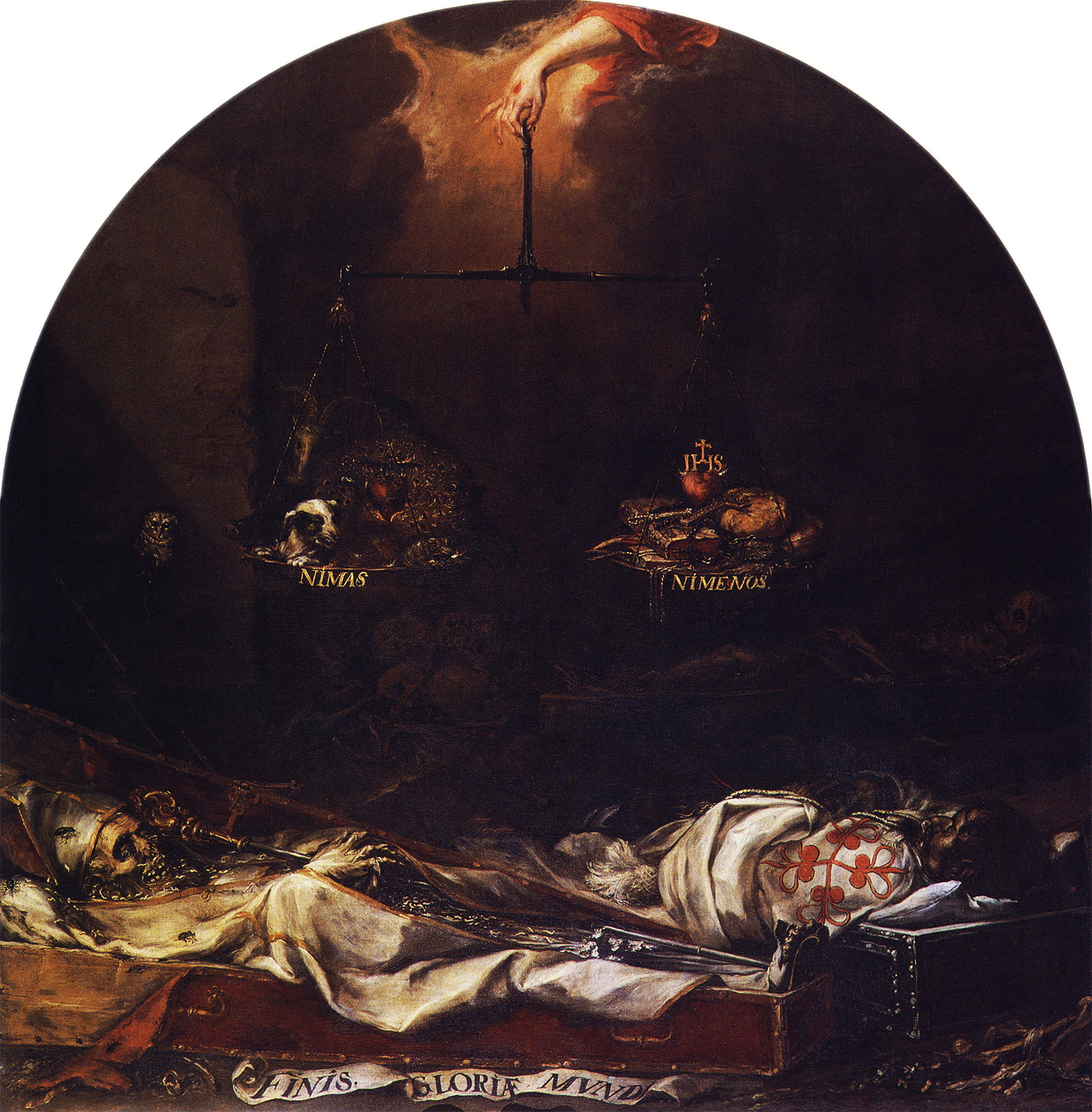Juan De Valdés Leal on:
[Wikipedia]
[Google]
[Amazon]

 Juan de Valdés Leal (4 May 1622 – 15 October 1690) was a Spanish painter and etcher of the
Juan de Valdés Leal (4 May 1622 – 15 October 1690) was a Spanish painter and etcher of the
Juan de Valdés Leal Paintings at Art Renewal CenterScholarly articles
about Juan Valdés Leal both in web an
PDF
@ th
Spanish Old Masters Gallery
{{DEFAULTSORT:Valdes Leal, Juan de 1622 births 1690 deaths Painters from Seville 17th-century Spanish painters Spanish male painters Spanish Baroque painters Spanish Roman Catholics Catholic painters Catholic etchers 17th-century etchers Catholic sculptors

 Juan de Valdés Leal (4 May 1622 – 15 October 1690) was a Spanish painter and etcher of the
Juan de Valdés Leal (4 May 1622 – 15 October 1690) was a Spanish painter and etcher of the Baroque
The Baroque ( , , ) is a Western Style (visual arts), style of Baroque architecture, architecture, Baroque music, music, Baroque dance, dance, Baroque painting, painting, Baroque sculpture, sculpture, poetry, and other arts that flourished from ...
era.
Career
Valdés was born inSeville
Seville ( ; , ) is the capital and largest city of the Spain, Spanish autonomous communities of Spain, autonomous community of Andalusia and the province of Seville. It is situated on the lower reaches of the Guadalquivir, River Guadalquivir, ...
in 1622. He became a painter, sculptor, and architect. By his twenties, he was studying under Antonio del Castillo in Córdoba.
Among his works are ''History of the Prophet Elias'' for the church of the Carmelites; ''Martyrdom of St. Andrew'' for the church of San Francesco in Córdoba; and ''Triumph of the Cross'' for la Caridad in Seville. He became friends with Bartolomé Esteban Murillo, who had a very different style; Leal tended to paint somber and dramatic subjects, while Murillo's style was peaceful and serene. After Leal returned to Seville in 1656, he and Murillo founded the Seville Academy of Art.
Several of his paintings treat the subjects of vanitas
''Vanitas'' is a genre of symbolizing the temporality, transience of life, the futility of pleasure, and the certainty of death, and thus the vanity of ambition and all worldly desires. The paintings involved still life imagery of transitory i ...
, transience and mortality. Two examples are ''In ictu oculi
The phrase ''in ictu oculi'' is a Latin language, Latin expression meaning "in the blink of an eye". One source is from the Bible, in 1 Corinthians 15:52: "''In momento, in ictu oculi, in novissima tuba''", translated in the KJV as "In a moment, ...
'' ("in the blink of an eye") and '' Finis gloriae mundi'' ("end of the world's glory"), painted for the Charity Hospital in Seville.
Life
He married Isabella Carasquilla in 1647. She was also a painter. He and his wife had five children, several of whom were also artists: Lucas, Juan, Maria, and Laura. His daughters specialized in portrait miniatures. Valdés died in Seville in 1690. His wife died in Seville as late as 1730. Maria died a nun in the Cistercian Convent in Seville in 1730.References
* *Further reading
* * * * * * * *External links
Juan de Valdés Leal Paintings at Art Renewal Center
about Juan Valdés Leal both in web an
@ th
Spanish Old Masters Gallery
{{DEFAULTSORT:Valdes Leal, Juan de 1622 births 1690 deaths Painters from Seville 17th-century Spanish painters Spanish male painters Spanish Baroque painters Spanish Roman Catholics Catholic painters Catholic etchers 17th-century etchers Catholic sculptors